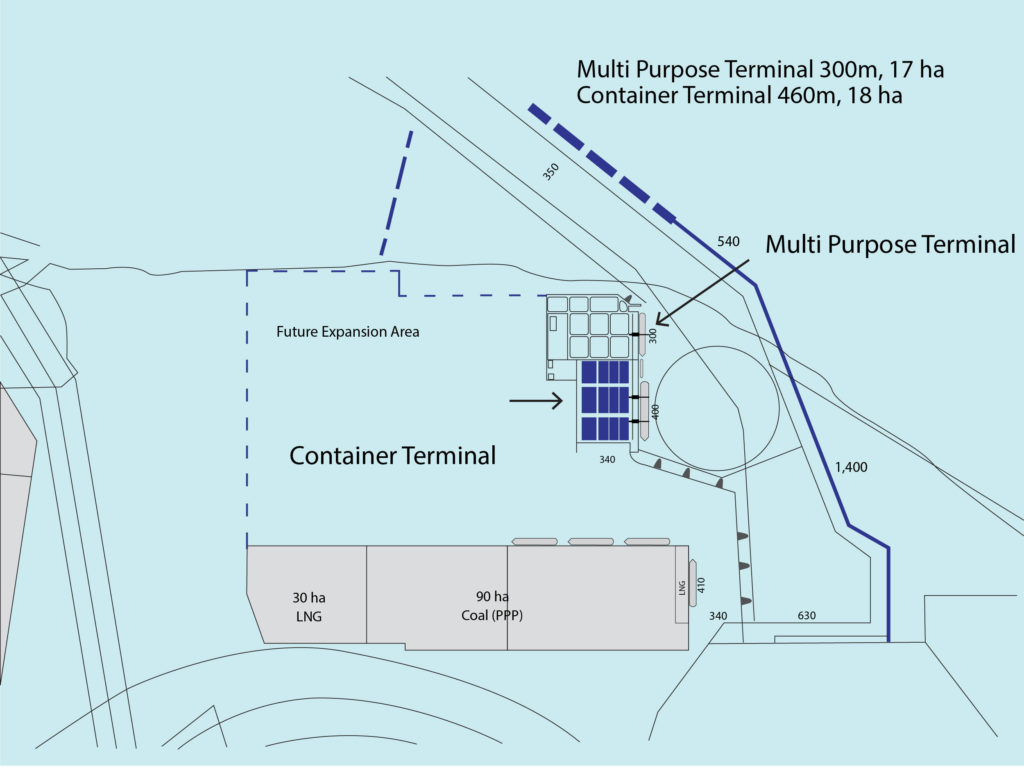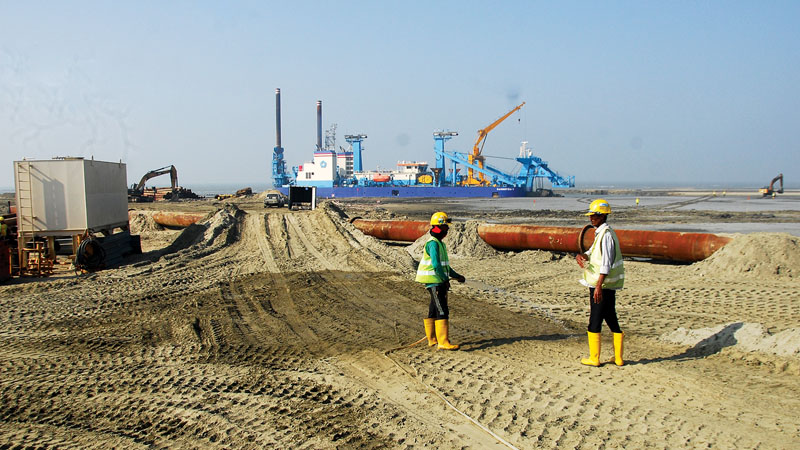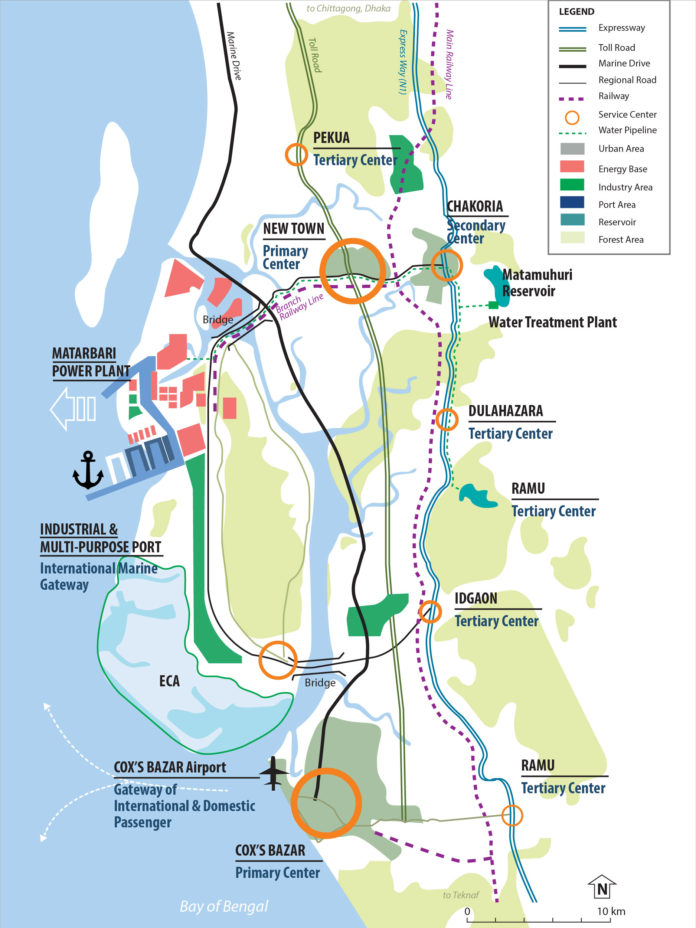The Bay of Bengal is growing in importance in terms of global geopolitics and geo-economics among the super powers in the East as well as in the West. Indian Ocean covers over 25 percent of the earth’s surface and one third of the global population live around this region which stores 40% of the oil and gas reserves on this planet. The Middle-East countries transport their crude oil to the Asian countries through this sea-route. An essential part of the Indian Ocean, the Bay of Bengal is the largest bay in the world. South China Sea is connected to it through the Malacca Straits. This makes the Bay strategically significant for countries like China and Japan in the Far-East. Bangladesh stands along the shoreline of this Bay of Bengal. Significance of these advantages has further been solidified through the mitigation of its conflict in maritime territory with Myanmar and India through which Bangladesh achieved sovereignty over a vast area of water body, besides its astounding 6% growth in economy.
The Big-B initiative by Japan primarily will revolve around the economic possibilities of the Bay of Bengal; evidently, Bangladesh has a crucial role to play in this master plan. As a component of this Big-B initiative, the largest coal based power plant in country as well as a coal jetty is being constructed at the Matarbari area of Maheshkhali in Cox’s Bazar.
Japan, Big-B and Bangladesh
Japan is the biggest partner in development for Bangladesh. Japan International Cooperation Agency or JICA is the government body that coordinates this official development assistance (ODA). Formed in 1974, JICA by now is the biggest bilateral development body in the world running projects in 152 countries. It plays significant roles in the progress of the undeveloped and the developing countries. Its contribution in the development of Bangladesh extends for more than four decades. The relation that sprouted with Bangabandhu’s Japan visit in 1973 has bloomed into solidity through the Big-B initiative. Currently, development projects of JICA in Bangladesh prioritizing the sector of economic enhancement and social crisis mitigation are underway by 9 partnership programs.
Big-B, the Bay of Bengal Industrial Growth Belt, is by far the largest contribution of Japan in our economic growth. In 2014, Prime Minister Sheikh Hasina visited Japan and Japan’s Prime Minister Shinzo Abe also visited Bangladesh as the first Japanese premier over the last 15 years which resulted in the solidifying of partnership between these two countries. This has elevated the bilateral relation up to a new level. Both premiers expressed their hope of mutual benefits and mentions that, progress could be achieved through the utilization of state-of-the-art technology from Japan and its socio-development experience. Big-B Initiative has been undertaken focusing on developing industries along the Dhaka-Chittagong-Cox’s Bazar belt area. This initiative will stand upon three main pillars.
The first one is the industry and business centered on the construction of the much expected deep sea port that would serve as the gateway of trade to the other South Asian countries as well.
The second one is energy. This will be achieved through the construction of the biggest coal power plant at Matarbari in Bangladesh. Electricity produced here shall not only suffice the demand of the Big-B region but also instill speed in growth and industries in a countrywide context. The project will complete by 2022-23 FY.
Transportation is the third pillar in it. To fortify the first two targets the transportation along the Dhaka-Chittagong-Cox’s Bazar has to be strengthened further extending into the neighboring countries as required.
Deep Sea Port in Bangladesh
Export-import trade through the ports in Bangladesh amount to 60 billion US dollar annually. The current growth of ship arrival in country is 11 percent. The narrow width of the Karnaphuli channel and shortage of depth enforce 48 percent of the bulk cargo to be unloaded at the outer anchorage in the sea. Mother vessels and large container ships cannot berth at the harbor. Once the large ships have anchored at the deep sea anchorage, cargoes are unloaded on smaller ships or on trawlers and transported to and from Chittagong. This adds to the cost besides causing wastage of valuable time.

A deep sea port in Bangladesh will serve as a gateway to business and trade with the South Asian countries. The harbor would accommodate ships with draft up to 18 meters which will reduce the cost at least by 15 percent. Usage of the port by neighboring countries will boost up our economy. Business and industry around the region will flourish resulting in development of more infrastructure and enhanced communication. Employment will rise besides increase in revenue generation owing to the expansion of export-import trade. Opportunities would unleash for the extraction of oil and gas from the sea as well as utilization of other maritime resources resulting in at least 2% growth in our GDP.
Neighboring countries, much earlier, had initiated their installation of deep sea ports meeting up the rising demand of business. Pakistan, Sri Lanka and Myanmar have their own deep sea ports while India is still in its building process in the Bay of Bengal. Specialists opine, Bangladesh can provide greater facilities and benefit in the sector comparing to the others taking into account its geographical advantage in mitigating the demand of the current international trade since more countries would avail this facility. This port can entice the export-import trade sector of the Indian Seven Sisters comprising the north east states, Kolkata and Haldia Port, Myanmar and the landlocked Nepal and Bhutan. ASEAN as well as the gulf countries would also attend the port owing to its location being at the center between the Middle-East and the northeast Asia. This could profit all parties if Bangladesh can build a fruitful business relation with all these countries through policy formulation and graceful communication. In particular, China, India, Nepal and Bhutan can benefit a lot from the implementation of this noble initiative.
The Matarbari discourse
Matarbari is a remote union lying by the coast of the Bay of Bengal in Maheshkhali upazila of Cox’s Bazar. It is the center of the initiative undertaken by Japan in implementing their plan of developing the Big-B industrial growth around the Bay. Construction work of a 1200 megawatt coal based power plant is already underway in the area. The first phase of the job is complete while second phase is ready to commence by the next year. According to the memorandum signed in 2014 between the countries, Japan will provide Tk. 29 thousand crore and Bangladesh Tk. 7 thousand crore for the project costing Tk. 36 thousand crore in total. The budget of 2016-17 already made an allocation of Tk. 2,400 crore into it.
Building of a coal jetty is included in the building of the power plant at the Matarbari coast. While conducting a feasibility study on the project, JICA researchers unearthed the potential of a multipurpose deep sea port in the area. Since the coal jetty is being built as an essential set up for the LNG and the power plant, this can also serve as multi-purpose port facilities if taken right care of. A 16 meter deep and 50 plus meter wide channel would be prepared at a distance of 2 kilometers from the sea coast which would ensure berthing of large ships at the port. A feasibility study has already been undertaken regarding this issue besides holding top level meetings and workshops in Bangkok during the first week of May ‘17, participated by high officials from BEZA (Bangladesh Economic Zone), Chittagong Port Authority, Railway, Petro Bangla and BPC besides, JICA. Eight organizations have expressed their interest in investing for the project, among them three from India and from Japan, China, Singapore and Hong Kong besides Bangladesh Petroleum Corporation (BPC). JICA proposed for the formation of a Coordinated Port Committee in addition to a Strategic Coastal Area Development Committee in the meeting held in Bangkok.

Panamax category ships with drafts up to 16 meters and length above 300 meters with capacity of 8000 TEUs will be able to berth at the port. The country can have multipurpose sea port by the year 2022. Since the project needs no additional investment, it will save huge amount of money.
Towards the building of the coal jetty, currently, ‘Cassiopeia V’- one of the five strongest dredgers in the world is in operation for the dredging of a 16 meter draft channel along the char located to the north of Siberdail in Matarbari. The power plant would stand in the southern part. Commercial Terminal would emerge covering the abandoned area in the north. The project also enables some road networks to facilitate the cargo and container transportation functioning under the supervision of Chittagong Port Authority.
The pre-feasibility study would be completed by the December of this year. An agreement between Bangladesh and Japan will be signed eventually by the March of 2018.
Kashima, the primary inspiration
Kashima, a city in Japan has been selected by the Japanese as a comparison to the Big-B Initiative in Matarbari. This city has been developed as a multi-purpose sea port generating huge industrial endeavor all around it contributing a lot to the national economy. Hundreds of kilometers away from Tokyo, this city has been built along the coast of the Pacific Ocean on the south-east side of Ibaraki Prefecture in Japan. Only fifty years back, this was considered an underdeveloped area where the salinity in earth prevented it from growing even simple crops. To utilize the huge potential of the barren lands and naval communication, in 1963 Japanese government undertook a coordinated plan for developing this area as an industrial base. Kashima sea port was selected as the starting mark on the track. As a result, the first artificially excavated deep sea port in Japan emerged.
Initially, this deep sea port was capable of accommodating vessels with 100,000 DWT (Deadweight Tonnage) which later upgraded further to accommodate vessels with 250,000 DWT. The port primarily based its operation on three functionalities, junction of road and maritime transportation, industrialization and urban development. Kashima port development ventures included an industrial complex built over an area of 4,000 hectors, a residential area covering 4,000 hectors and additional 330 hectors allotted for business complex. The master plan took less than ten years to result in such an unprecedented development. The Kashima port handled 2,153 thousand tons of cargo in 1969 which reached 39,063 thousand tons within a period of six years only. Population increased by 11% within 20 years between 1960 and 1980 enabling tertiary industrial growth by 4.5 times and education at the graduation level reached 9.4 drastically reducing the unemployment rate.
However, the initial procedures of building the port had to overcome some natural barriers. Building of brake water for the port took much toil than was anticipated earlier. This was like fighting against a huge tide brought about by the Mediterranean Sea. Japan achieved success in its initiative as it had a far sighted planning in the first place. Key factors to its success were government manifesto of Japan, strong leadership at a local base as well as coordinated planning of the national transportation system. The Big-B Initiative around Matarbari encourages us to nurture the dream for another Kashima in this region. Completion of the task would certainly change our position in the regional geopolitical scenario.
Opening the doors of prosperity
International navigation these days have grown much more competitive than ever before. Capacity of Chittagong port in container handling stands at 5 million tons annually. Current rate of growth is sure to exceed the existing demand by 2026 and Matarbari can bear upon it the burden of the additional load. Communication along the Dhaka-Chittagong-Cox’s Bazar will enhance further with the completion of the construction of Karnaphuli Tunnel, the 70 km long marine drive along the coast, and a 15 kilometers of railway from Chakaria to Matarbari besides the construction of the 4-lane highway. On top, development of road, rail and naval communication will attract foreign investment. We cannot exploit the geographical advantage and newly achieved colossal maritime territory if we fail to equip the port with the modern equipment and facilities fast. As such, earliest implementation of the master plan is imperative once the feasibility study is over.




